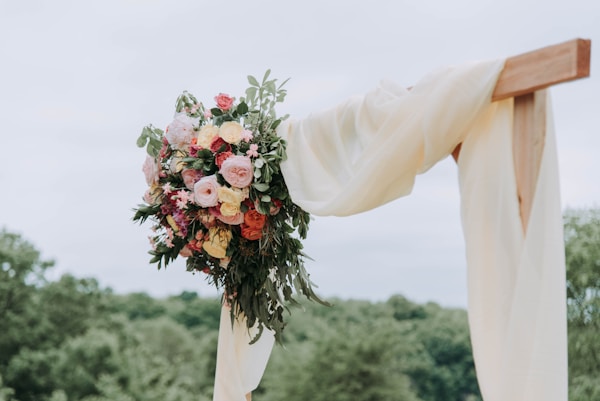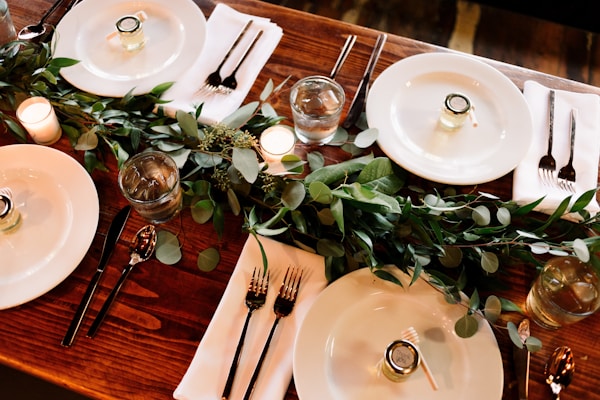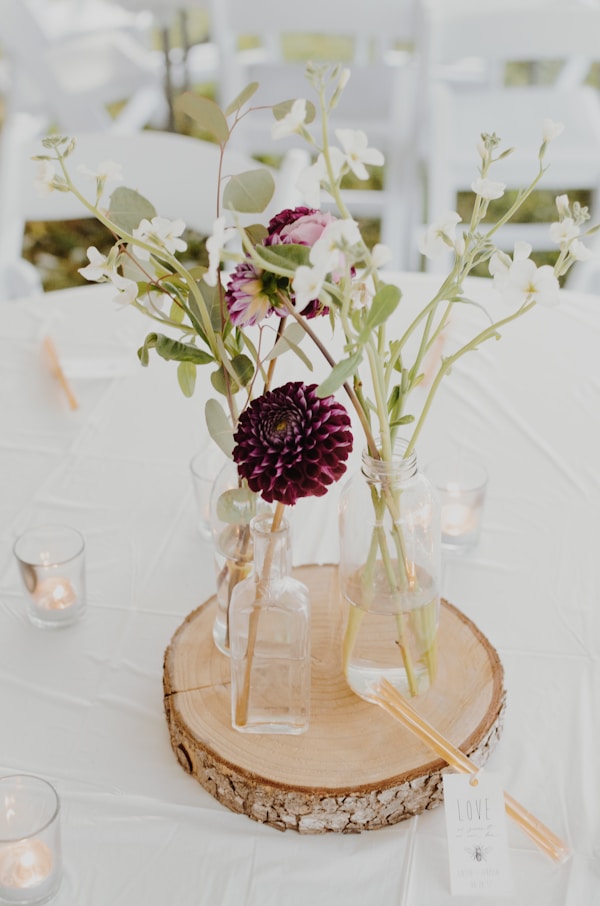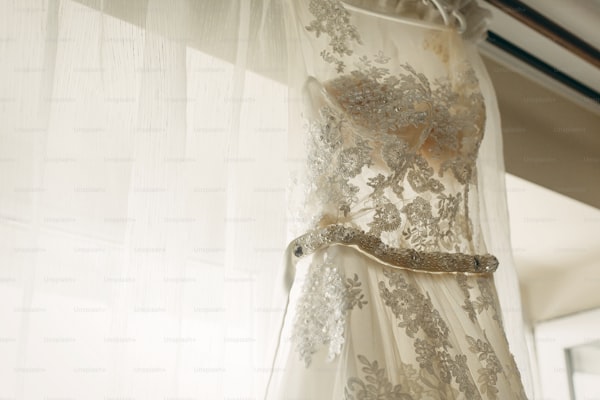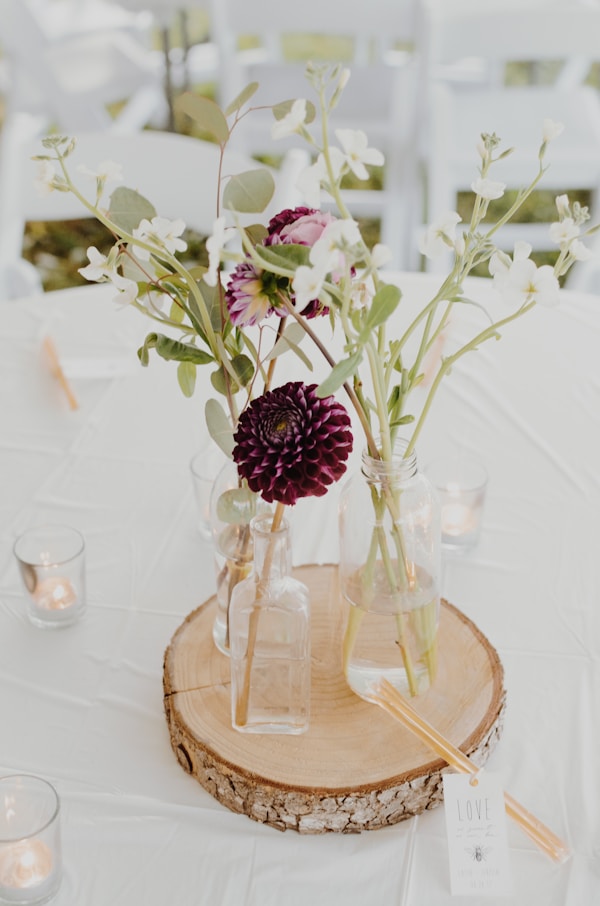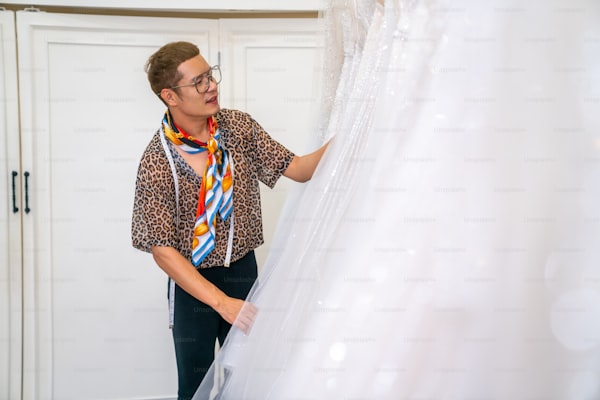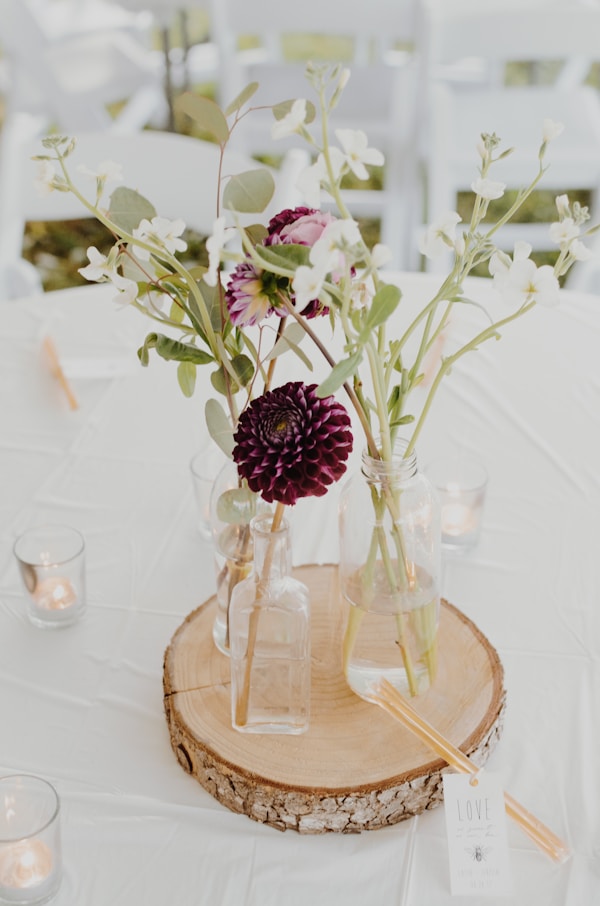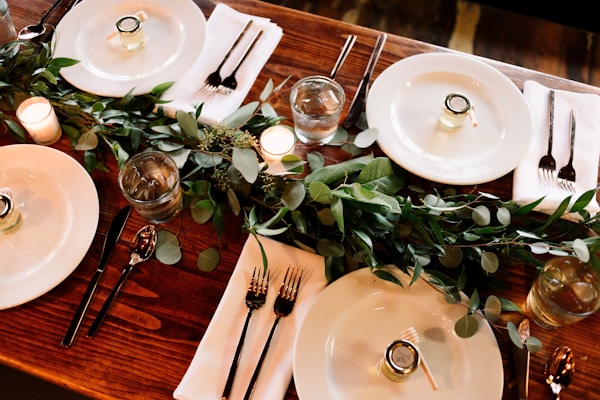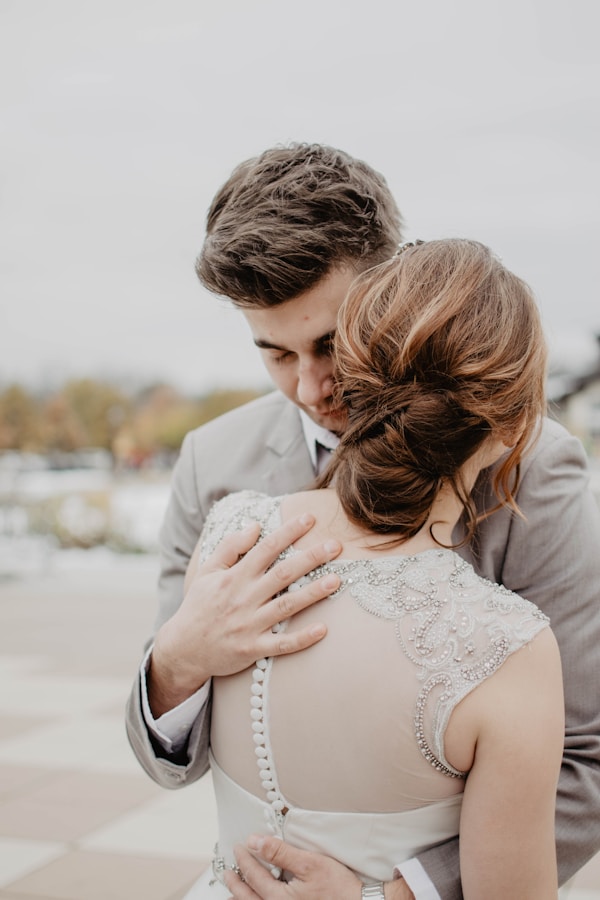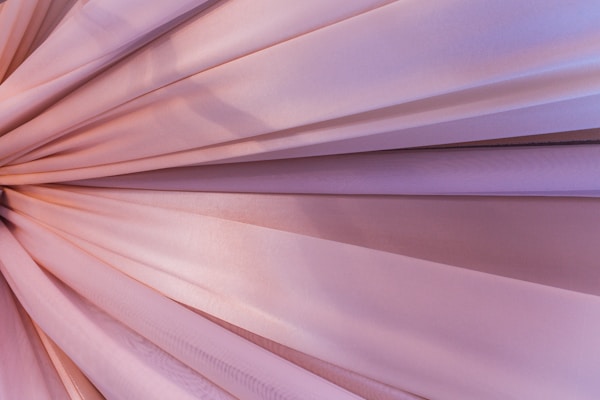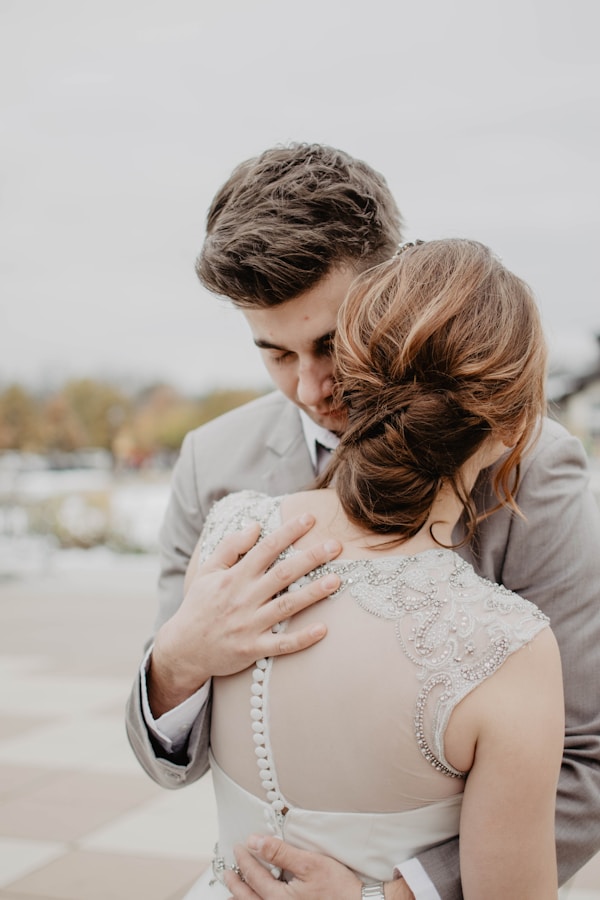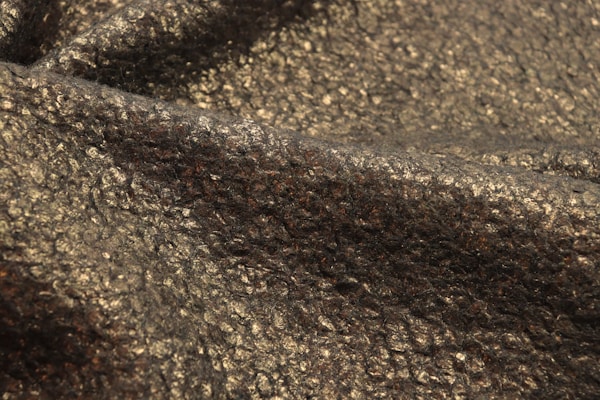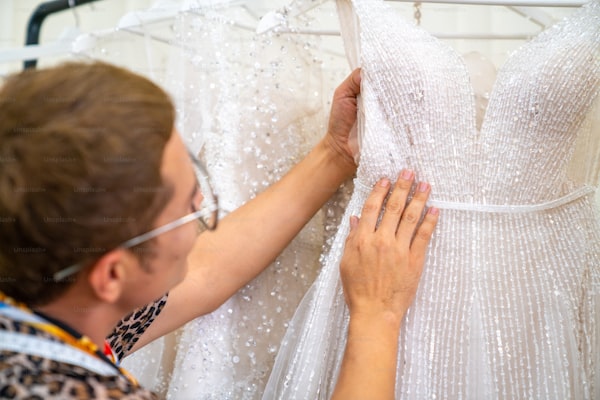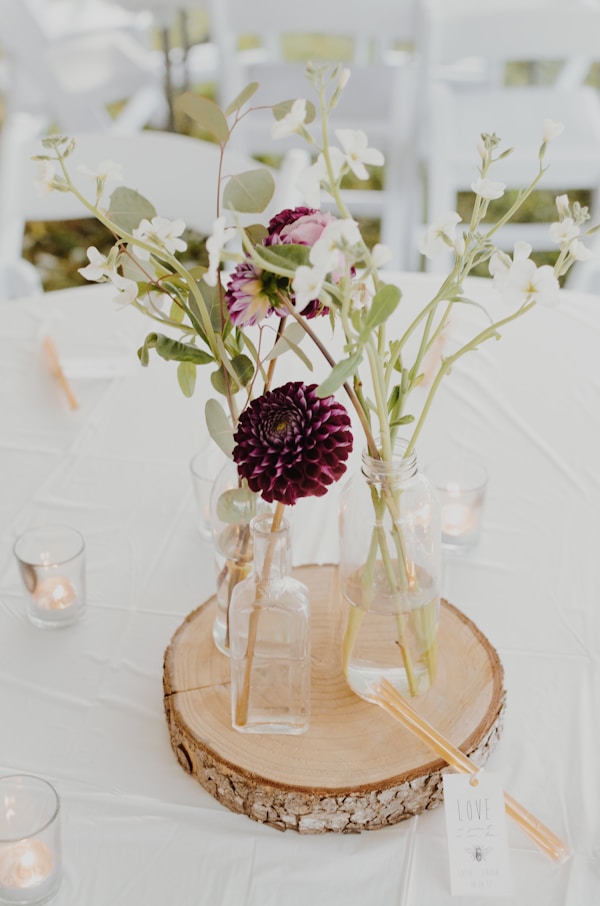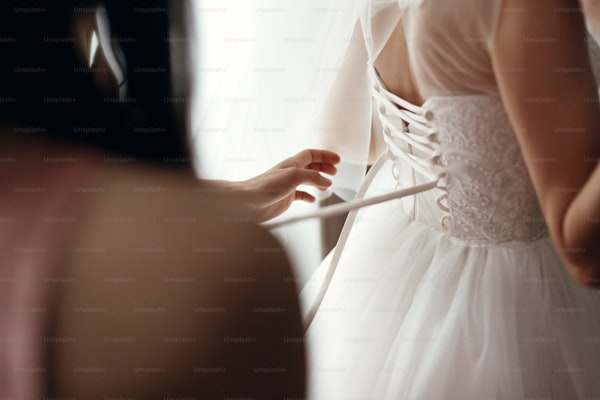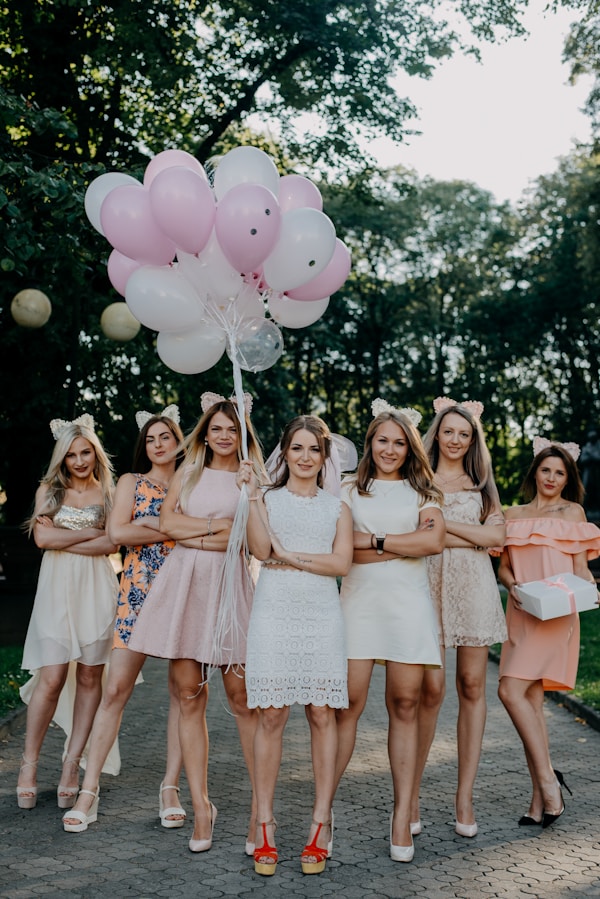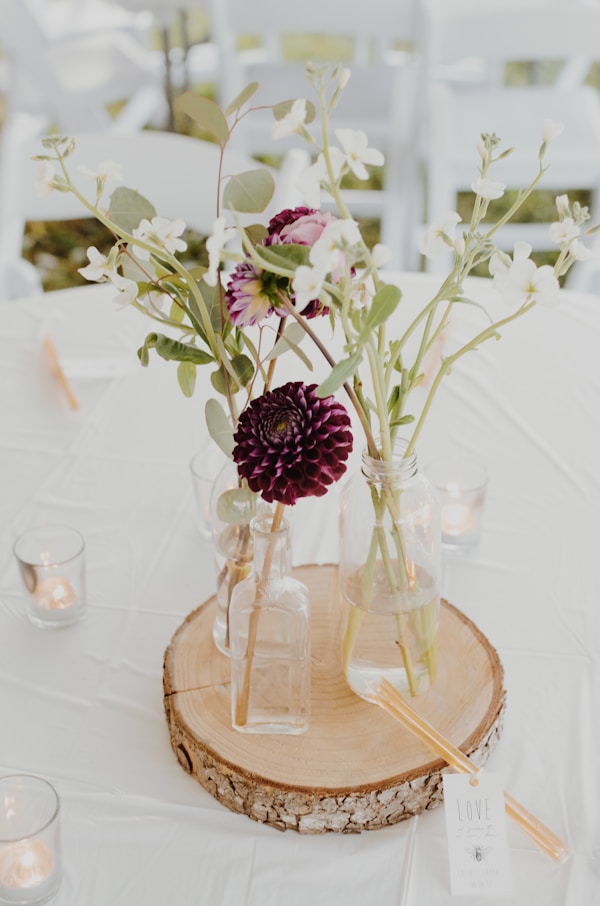Mastering Complex Wedding Dress Production: A Comprehensive Guide
Wedding dresses are often the centerpiece of a couple's special day, and their design can vary from simple to complex. But how do you manage the production of wedding dresses with complex designs? This article explores the intricacies of wedding dress production, the challenges faced, and the strategies to overcome them. With the wedding industry booming globally, understanding the workflow and management strategies for complex designs is increasingly important.The Importance of Efficient Management in Wedding Dress ProductionComplex designs in wedding dresses require not just creativity, but also effective management. This ensures that each piece is crafted with attention to detail while staying within budget and deadlines. Key aspects of managing production include:Planning and Scheduling: Creating a realistic timeline.Cost Estimation: Understanding material costs and labor wages.Quality Control: Keeping standards high throughout the process.Understanding Complex DesignsBefore diving into management techniques, it’s crucial to understand what constitutes a complex design in wedding dresses. Complexity can stem from various factors, such as intricate beadwork, layered fabrics, or custom fittings. Each design poses unique challenges such as:Multiple Layers: Managing fabric types and weights.Detailed Embellishments: Coordination of various materials and techniques.Custom Fittings: Ensuring a perfect fit for a diverse clientele.Steps to Manage Complex Wedding Dress ProductionHe...
Mastering the Art of Crafting Wedding Dresses: Best Practices for Layered Fabrics
Introduction: The Allure of Layered Fabrics in Wedding Dress Design Creating a wedding dress is one of the most significant tasks for any bridal designer or DIY bride. The fabric choice can greatly affect not just the aesthetics of the dress but also its comfort and fit. Among popular fabric choices, layered fabrics stand out for their ability to add depth, texture, and an ethereal feel to any gown. In this article, we will explore the best practices for creating a wedding dress with layered fabrics, ensuring that your design is both beautiful and functional. Why Choose Layered Fabrics? Layered fabrics can transform a simple design into something extraordinary. They allow for various textures, increases the volume of the dress, and provides opportunities for creative expression. Here are a few practical advantages: Texture Variation: Layering different types of fabrics can create unique textures, enhancing the visual interest. Movement: Layered fabrics flow beautifully, adding elegance and grace to any bride's walk down the aisle. Customization: Layering offers unparalleled flexibility in design; you can change layers for different occasions or styles while keeping the base of the dress consistent. Best Practices for Designing Layered Wedding Dresses 1. Choose the Right Base Fabric The foundation of your layered wedding dress is crucial. Select a base fabric that is both comfortable and suitable for layering. Fabrics like silk, chiffon, and tulle are popular choices for th...
How to Maintain the Shape of a Wedding Dress with a Structured Bodice
Understanding the Importance of a Structured BodiceA wedding dress is often one of the most cherished garments in a woman's life, symbolizing love, commitment, and a special moment. Among various styles and designs, a wedding dress with a structured bodice stands out for its elegant silhouette, which enhances the bride's frame and adds sophistication. However, maintaining the shape of this type of dress can be challenging due to its intricate design. In this article, we will explore effective methods to keep your structured bodice looking its best, tips for proper care, and answers to commonly asked questions.What Is a Structured Bodice?A structured bodice refers to a fitted upper section of a wedding dress that is often reinforced with materials such as boning, padding, or lining to provide shape and support. This design not only offers a flattering fit but also adds to the overall aesthetic of the dress. The structured bodice can come in various styles, including off-the-shoulder, sweetheart neckline, or classic scoop, making it a popular choice for brides.The Benefits of a Structured Bodice1. Enhanced Shape: A structured bodice helps accentuate the bride's waist and bust, creating an hourglass figure.2. Support: The added support allows for a more secure fit, ensuring the dress stays in place throughout the ceremony and reception.3. Versatility: This style can adapt to different wedding themes, from classic to modern, making it a versatile choice for brides.How to Maintain...
Unveiling the Secrets: Techniques to Create a Wedding Dress with Detachable Elements
As brides look for unique ways to personalize their big day, wedding dresses with detachable elements have become increasingly popular. These innovative designs not only allow for flexibility and versatility but also enable brides to express their individuality. In this article, we will explore the various techniques used in creating these stunning gowns, the benefits of detachable features, and expert tips on how to choose the perfect dress for your special day.Understanding Detachable Elements in Wedding DressesDetachable elements in wedding dresses can include sleeves, trains, bodices, skirts, and more. These components can be removed or added efficiently, changing the overall look of the gown throughout the day. The idea is to give brides the option to switch styles for different moments, such as a formal ceremony and a lively reception.Why Choose a Wedding Dress with Detachable Elements?The popularity of detachable features stems from various advantages: Versatility: Brides can tailor their outfits according to the event’s mood and their personal style. Cost-Effectiveness: Opting for detachable elements can save money on additional dresses. Comfort: Changing styles allows for more comfortable wear during the reception. Innovative Designs: Customization options empower brides to create unique looks.Techniques Used in Creating Detachable ElementsDesigning a wedding dress with detachable elements requires a unique set of skills and techniques. Below are some of...
Exploring the Methods to Create a Stunning Wedding Dress with an Ombré Effect
Introduction to Ombré Wedding DressesThe wedding day is one of the most important milestones in a person’s life, and every bride dreams of looking perfect in the gown of her choosing. One of the most captivating trends that has emerged in recent years is the creation of wedding dresses featuring an ombré effect. The ombré effect creates a visually striking gradient of colors, lending a unique and modern flair to traditional bridal attire. In this article, we will delve into the various methods used to create ombré wedding dresses, while exploring how different techniques can dramatically change the look, feel, and style of these breathtaking garments.What is an Ombré Effect?Before diving into the methods, let’s clarify what an ombré effect is. The term "ombré" originates from the French word meaning "shaded." In fashion, it refers to a gradual blending of one color hue to another, usually moving from a light shade to a darker shade or vice versa. This effect can be applied in various ways, and its versatility is one of the primary reasons brides are drawn to it for their wedding attire.Popular Colors for Ombré Wedding DressesBrides can opt for various color combinations, including pastel gradients, bold hues, or even subtle whites and creams. Some popular colors for ombré wedding dresses include:Soft pink to whiteLavender to dark purpleCoral to ivoryBlue to tealGold to champagneMethods Used to Create an Ombré EffectThere are several methods that designers utilize to craft omb...
Designing the Perfect Wedding Dress: Balancing Comfort and Style
IntroductionChoosing the right wedding dress is one of the most important decisions a bride makes during her wedding planning process. It should encapsulate her personality while also ensuring comfort throughout the day. In this article, we will explore how to design a wedding dress that accommodates both comfort and style, providing valuable insights and considerations for brides-to-be.The Importance of Comfort in Wedding DressesWeddings can be lengthy and demanding events; therefore, the dress must allow for comfort. A bride should not be restricted by her attire as she moves through the ceremony and reception. Here are a few reasons why comfort is essential: The average wedding lasts approximately 8-12 hours, requiring the bride to feel at ease throughout the day. A comfortable dress allows for better movement, especially during dancing and other activities. Brides who are comfortable are likely to feel more confident, enhancing their overall experience.Factors to Consider for Comfort Material Choosing the right fabric can significantly impact comfort levels. Lightweight, breathable materials such as chiffon, cotton lace, and silk are excellent choices. Fit A well-fitted dress will allow for better movement and comfort. Consider tailoring options for a custom fit. Design Details Consider design elements like a sweetheart neckline or a-line silhouette, which can enhance both comfort and elegance. Layering Multiple layers may add visual inter...
Unveiling the Artistry: What Are the Steps for Creating a Wedding Dress with a Scalloped Hem?
Designing a wedding dress is an intricate process that showcases creativity, craftsmanship, and personal style. Among the numerous styles and designs available, a wedding dress with a scalloped hem stands out for its elegance and romantic appeal. In this guide, we will delve into the essential steps for creating a stunning wedding dress featuring a scalloped hem. We will cover everything from initial inspiration to final fittings, ensuring that your vision becomes a reality. Whether you're a seasoned designer or a novice, these steps will provide you with a comprehensive understanding of the process.Understanding the Scalloped Hem DesignBefore diving into the actual creation of the wedding dress, it’s vital to understand what a scalloped hem entails. A scalloped hem is characterized by its rounded edge, resembling the shape of a seashell. This design adds a delicate and fluid appearance to the garment, making it an excellent choice for wedding dresses. The scalloped hem can be used in various fabrics and styles, adding uniqueness to every creation.Step 1: Gather InspirationInspiration is the foundation of any creative endeavor. Start by collecting images of wedding dresses that feature scalloped hems. You can browse through wedding magazines, websites, or even Pinterest. Pay attention to the different styles, fabrics, and embellishments used. Make a mood board to compile your favorite designs and colors, visualizing the overall aesthetic you aim to achieve.Step 2: Choosing th...
Mastering Wedding Dress Alterations: A Guide to Managing High Neckline Alterations
Understanding High Neckline Wedding Dress AlterationsWhen it comes to weddings, every detail counts, starting with the bride's attire. The wedding dress is a central piece that represents the bride’s style and beauty. Among the numerous elements that can define a wedding dress, the neckline plays a critical role in not just aesthetics but also comfort. If you have chosen a wedding dress with a high neckline, managing alterations can be a bit tricky. In this guide, we will explore how to effectively handle these alterations while ensuring the perfect fit and style.Why High Necklines? Understanding the AppealHigh necklines have become increasingly popular for brides looking for a modern and sophisticated touch. They can provide an elegant and modest appearance while allowing for intricate designs and embellishments. Some brides prefer high necklines for cultural or personal reasons, while others are drawn to their ability to exude class and grace. However, this style also demands careful consideration regarding alterations.Common Challenges of High Neckline AlterationsAltering a wedding dress with a high neckline involves overcoming several challenges. Here are some of the common issues you may encounter:Fit Adjustments: Ensuring that the bodice fits snugly without compromising the neckline's integrity.Design Features: Maintaining the design elements such as lace, beading, or other embellishments which may require special handling.Proportion Adjustments: Making sure that the ov...
Exploring Techniques for Creating a Wedding Dress with a Sleek Silhouette
What Techniques Are Used to Create a Wedding Dress with a Sleek Silhouette?The journey to finding the perfect wedding dress is often filled with excitement, anticipation, and a little bit of stress. One of the most sought-after styles for brides is the sleek silhouette. In this article, we will delve into the techniques and methods used by designers to create wedding dresses that not only emphasize a bride's figure but also exude elegance and sophistication.Understanding the Sleek SilhouetteBefore we explore the techniques, let's clarify what a sleek silhouette means in the context of wedding dresses. A sleek silhouette is characterized by clean lines, minimal embellishments, and a form-fitting design that flatters the body without unnecessary bulk. This style is perfect for modern brides who favor a timeless look over overly ornate decorations.Key Techniques Used in Creating a Sleek SilhouetteCreating a wedding dress with a sleek silhouette involves a combination of various techniques. Below are some essential methods used by fashion designers:TechniqueDescription1. Fabric ChoiceChoosing the right fabric is crucial. Materials like crepe, silk, and satin provide a smooth drape and contour the body beautifully.2. Darting and SeamingDarting is a technique that creates shape by adding fullness in strategic areas, while seaming can be used to create structure without bulk.3. Fitted BodicesDesigners often opt for fitted bodices that snugly hug the torso, emphasizing curves while m...
Exploring Methods to Create a Wedding Dress with Unique Draping
When it comes to wedding gowns, the appeal of unique draping can make a dress truly unforgettable. But what methods are used to create a wedding dress with such distinctive designs? In this article, we'll delve into various techniques that designers employ to craft these stunning garments, exploring everything from fabric selection to draping techniques, and the role of innovation in modern bridal fashion.The Art of Draping in Wedding Dress DesignDraping is an essential technique in the world of fashion design, particularly for bridal wear. It involves the strategic arrangement of fabric on a dress form to create beautiful, flowing shapes that enhance the silhouette of the wearer. Understanding the various methods used in draping can help you appreciate the artistry involved in creating a wedding dress with unique designs.Key Methods in Creating Unique DrapingDesigners employ several methods when pursuing unique draping in wedding dresses. Below are some of the most prevalent techniques:MethodDescription1. Bias DrapingFabric is cut and sewn on a diagonal angle to create fluidity and movement, allowing the material to fall softly against the body.2. Architectural DrapingThis method involves constructing the dress with a structured approach, using pleats, tucks, or folds to achieve a sculptural effect.3. Asymmetrical DrapingCreating an uneven hemline or varying drape levels on different sides of the dress lends a modern edge to traditional designs.4. Layered DrapingIncorporatin...
Mastering Production Timelines for Custom Wedding Dresses: A Comprehensive Guide
IntroductionCreating the perfect custom wedding dress is a labor of love that requires meticulous planning and attention to detail. But how do you handle production timelines for custom wedding dresses? Understanding the timeline is essential for both designers and brides to ensure a seamless experience from conception to the aisle. In this article, we will delve into the various factors influencing production timelines and provide tips for managing each phase effectively.Understanding the Custom Wedding Dress Production TimelineProducing a custom wedding dress involves several stages, each with its own timeline. Below is an overview of the typical timeline components:StageTimeframeInitial Consultation1-2 weeksDesign Phase2-4 weeksFabric Selection1-2 weeksPattern Making3-4 weeksFirst Fitting1-2 weeksAdjustments & Second Fitting2-4 weeksFinal Fitting1 weekSewing & Styling4-8 weeksDelivery1 weekInitial ConsultationThe journey begins with an initial consultation, where the bride and designer discuss ideas, styles, and preferences. This stage typically lasts between 1 to 2 weeks, depending on how quickly both parties can align their visions. During this time, it’s important for the bride to come prepared with inspiration images and a clear understanding of her budget.Design PhaseIn the 2 to 4 weeks following the consultation, the designer will create sketches and conceptualize the dress. This phase is crucial for refining the vision and deciding on details like neckline, silhouet...
What You Need to Know About Creating a Wedding Dress with Multiple Fabric Textures
Introduction to the Art of Designing Wedding DressesWhen it comes to weddings, every detail matters, especially the bridal gown. One of the trends gaining popularity is the use of multiple fabric textures in wedding dress design. But what are the considerations for creating a wedding dress with multiple fabric textures? In this article, we will explore the intricacies of designing such a gown, the benefits, challenges, and best practices to ensure that the final product is a masterpiece that reflects the bride's individuality.Understanding the Appeal of Multiple Fabric TexturesThe use of multiple fabric textures in wedding dresses can enhance the gown's aesthetic appeal. A well-curated blend not only makes the gown visually stunning but also adds depth and dimension. By creatively combining different materials, designers can achieve a unique look that tells a story. Texture can evoke emotions and capture the essence of the bride's personality.Key Considerations When DesigningCreating a wedding dress with multiple fabric textures involves several considerations: Consideration Description 1. Fabric Compatibility Ensure that the chosen fabrics complement each other in terms of weight, drape, and feel. 2. Color Harmony Mix textures that harmonize in color to maintain a cohesive look. 3. Body Type Different textures can accentuate or disguise certain body features; choose wisely based on the bride's silhouette. 4. Occasion & Setting Consider the weddi...
How to Design a Wedding Dress That Flatter Different Body Types
IntroductionDesigning the perfect wedding dress involves more than just choosing a fabric and a color. One of the most crucial aspects of creating a stunning gown is understanding how to flatter different body types. This article will guide you through the process of designing a wedding dress that complements every bride’s unique figure. Whether you are a designer or a bride-to-be, this comprehensive guide provides valuable insights into creating the ultimate dream dress.Understanding Body TypesBefore diving into the design process, it is essential to understand the various body types. Each body shape has its own strengths and areas that can be accentuated or minimized. Here are the most common body types:Body TypeDescriptionDesign TipsA-ShapedNarrow shoulders and wider hips.Consider gowns with structured bodices and flowing skirts.V-ShapedBroader shoulders and narrower hips.A-line dresses can help balance proportions.RectangleSimilar bust and hip measurements with a straight waist.Add ruffles or embellishments to create curves.HourglassWell-defined waist with balanced bust and hips.Fitted styles and mermaid gowns enhance this shape.Plus SizeVariety of shapes with fuller figures.Empire waistlines and A-line skirts create a flattering silhouette.Finding the Right SilhouetteThe silhouette of a wedding dress plays a vital role in how it flatters the body. Here are a few popular silhouettes that suit different body types:A-Line: Versatile and universally flattering, perfect for A...
Unveiling the Art of Wedding Dress Design: Techniques for Creating a Detachable Overskirt
Exploring the Techniques Behind Detachable Overskirts in Wedding Dresses Wedding dresses have always been a topic of great interest in the fashion world, and one of the most innovative trends is the detachable overskirt. This unique design allows brides to transition seamlessly between various looks on their special day. But what techniques are employed in the creation of these stunning garments? In this article, we will delve into the various methods used to design and construct a wedding dress with a detachable overskirt, as well as explore additional questions brides-to-be might have regarding this exquisite fashion choice. The Evolution of Wedding Dress Design The history of wedding dress design has evolved dramatically over the centuries, influenced by cultural, social, and technological changes. Today’s trends reflect a blend of tradition and modernity, with detachable overskirts standing out as a versatile option. This design element allows brides to enjoy the glamour of a full skirt during ceremonies and then easily transition to a more streamlined silhouette for the reception or dancing. Key Techniques in Designing a Wedding Dress with a Detachable Overskirt Creating a wedding dress with a detachable overskirt involves several specialized techniques that ensure both aesthetic appeal and functionality. Here are some of the most crucial ones: Technique Description Pattern Making The foundation of any garment, precise pattern making allows designers t...
Discover the Art of Crafting a Wedding Dress with a Handkerchief Hem
Understanding the Handkerchief Hem Wedding DressChoosing the perfect wedding dress is an emotional journey for many brides, and one style that has gained popularity is the wedding dress with a handkerchief hem. This unique hemline can add a touch of whimsical charm and elegance, standing out on your special day. But what methods are used to create this stunning design? In this article, we will explore the intricate processes behind crafting a wedding dress with a handkerchief hem, as well as touch on related topics that may interest brides-to-be and fashion enthusiasts alike.What is a Handkerchief Hem?A handkerchief hem is characterized by its asymmetrical design, where the fabric drapes in flowing points resembling a handkerchief. This hemline can vary in length, typically shorter at the front and longer at the back, which allows for ease of movement and a flattering silhouette. This style is not only visually appealing but also versatile, suited to various wedding themes from bohemian to classic elegant.Methods of Creating a Handkerchief Hem Wedding DressDesigning a wedding dress with a handkerchief hem requires a blend of creativity, technical skills, and understanding of fabric behavior. Here are the primary methods used in creating this stunning gown:1. Fabric SelectionThe first step in creating a wedding dress with a handkerchief hem is selecting the right fabric. Lighter materials such as chiffon, silk, and georgette are popular choices because they drape beautifully, ...
How to Effectively Manage Fitting Sessions for a Wedding Dress with Corsetry
Finding the perfect wedding dress is one of the most exciting parts of the wedding planning process. For many brides, this experience is even more special when incorporating corsetry into their dress. However, managing fitting sessions for a wedding dress with corsetry can be a complex task. In this article, we will explore effective strategies to ensure a smooth and enjoyable fitting process, while addressing common concerns and questions brides may have.Understanding Corsetry in Wedding DressesCorsetry refers to the structured framework of a garment, often used to shape and support the body. In wedding dresses, corsetry can enhance the silhouette, providing support to the bust and creating an hourglass figure. However, finding the right fit can be more challenging than with traditional dresses. Here, we will discuss some critical aspects to consider.Importance of Choosing the Right Bridal BoutiqueThe first step in managing fitting sessions is selecting a bridal boutique that specializes in dresses with corsetry. Look for boutiques that have: Experienced Staff: Staff members who understand the intricacies of corsetry and can provide expert guidance. A Variety of Styles: A diverse selection of dresses to suit different body types and personal styles. Positive Reviews: Recommendations or testimonials from other brides regarding their fitting experiences.Scheduling Your Fitting SessionsOnce you have chosen a boutique, the next step is scheduling fitting sessions. Here are so...
Mastering the Art of Designing a High-Low Hemline Wedding Dress: Best Practices and Tips
IntroductionWhen it comes to wedding attire, the wedding dress holds the highest place of importance. Trends evolve, and one style that has recently gained traction is the high-low hemline wedding dress. This design seamlessly blends elegance with modern aesthetics. However, creating a stunning wedding dress with a high-low hemline requires knowledge of fabric, tailoring techniques, and an understanding of body shapes. In this article, we will explore the best practices for creating a wedding dress with a high-low hemline, ensuring you navigate this trend with confidence and style.Understanding the High-Low HemlineThe high-low hemline features a shorter front that gradually lengthens at the back, providing a unique silhouette. This style not only allows the bride to showcase her shoes but also adds a playful elegance suitable for both formal ceremonies and casual receptions. The versatility of the high-low hemline makes it a popular choice among brides looking for something different.Why Choose a High-Low Hemline Wedding Dress?Brides are often faced with the dilemma of choosing a traditional full-length gown or a modern alternative. Here are some reasons why a high-low hemline is a fantastic choice: Comfort: The shorter front allows for ease of movement, making it more comfortable for dancing and walking. Showcase Footwear: A high-low dress beautifully displays statement shoes, which can be a fun way to express personal style. Unique Style: High-low dresses stand out...
How to Prevent Damage to Delicate Fabrics When Making Wedding Dress Alterations
Understanding Delicate Fabrics in Wedding Dress AlterationsWedding dresses hold immense sentimental value, and they are often crafted from exquisite fabrics that can be quite delicate. When it comes to alterations, it's crucial to handle these fabrics with utmost care to avoid any damage. This guide aims to explore effective strategies for preventing damage to delicate fabrics during wedding dress alterations, ensuring that the dress looks flawless on the big day.Common Delicate Fabrics Used in Wedding DressesBefore diving into alteration techniques, it’s essential to understand the types of delicate fabrics commonly used in wedding dresses. Each fabric has its unique properties and requires specific handling. Here are some popular delicate fabrics:Fabric TypeCharacteristicsCare TipsSatinSmooth and glossy, but can fray easilyHandle with care and avoid excessive steamChiffonSheer and lightweight, may snag or tear easilyUse a gentle touch and avoid pinning too tightlyLaceBeautiful and intricate, but can unravelSecure edges with care and avoid heavy stitchingOrganzaStiff and crisp, can scorch with high heatUse low heat when pressing and avoid high temperaturesAssessing the Dress Before AlterationsBefore making any alterations, it’s important to assess the wedding dress thoroughly. Check for any existing damage, such as loose threads or fraying edges, and determine the fabric type. This evaluation helps in selecting the right tools and techniques for the alterations.Key Tips for ...
Mastering the Art of Hand-Sewn Lace Appliqué for Wedding Dresses
IntroductionEvery bride dreams of a wedding dress that not only reflects her personal style but also features exquisite details that make it truly unique. Among the list of elegant embellishments, hand-sewn lace appliqué stands out as a classic choice that adds depth and sophistication to wedding gowns. In this article, we will explore the techniques used to add hand-sewn lace appliqué to a wedding dress, delving into the materials, methods, and tips to achieve breathtaking results. Whether you are a seasoned seamstress or an enthusiastic amateur, this guide will provide you with the knowledge you need to master this beautiful craft.Understanding Lace AppliquéLace appliqué is the technique of sewing lace onto fabric to create ornamental designs. This method allows for infinite creativity, enabling designers and brides to customize their wedding dresses to their liking. Traditionally, lace appliqué was a labor-intensive craft, but today there are various techniques to simplify the process while maintaining the beauty of hand-sewn art.1. Choosing the Right LaceThe first step in adding hand-sewn lace appliqué is selecting the appropriate lace. Consider factors such as texture, color, and pattern. There are numerous types of lace available, including:Chantilly Lace – known for its delicate floral patterns.Alençon Lace – features a raised cord outline which adds dimension.Venise Lace – has a more structured form, often used for heavier appliqué designs.When selecting lace, match i...
Designing a Wedding Dress That Perfectly Mirrors the Bride's Personal Style
Understanding the bride's personal styleDesigning a wedding dress that reflects the bride's personal style is an intricate journey that begins with understanding her personality, preferences, and the overall theme of the wedding. The wedding dress is not just a garment; it embodies the bride's identity and her vision for the most special day of her life. Whether she leans towards modern minimalism or vintage elegance, crafting a dress that speaks to her soul is paramount.Steps to Design the Perfect Wedding DressCreating a wedding dress that resonates with the bride encompasses several critical steps. We will outline these steps and provide insight into how each contributes to the overall vision of the dress.1. Consultation with the BrideThe first step in designing a wedding dress is a comprehensive consultation with the bride. This session can uncover essential insights about her style preferences. During the consultation, consider asking: What are your favorite colors? Are there specific fabrics you prefer? Do you envision your dress to have a specific silhouette? (A-line, ball gown, mermaid, etc.) What kind of embellishments, if any, do you want? What styles influence your daily wardrobe?2. Research and InspirationOnce you gather the bride’s thoughts, the next step is research. Browse through bridal magazines, online platforms like Pinterest, and fashion websites. Pay close attention to wedding dress designers whose work might reflect the bride’s style. Colle...
